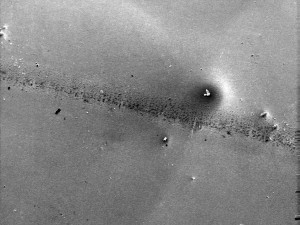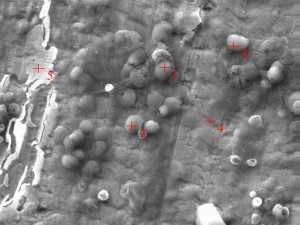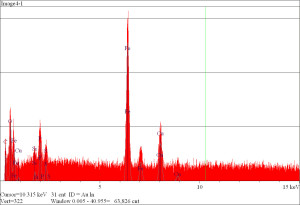Anode Electrode for Lithium-Ion Battery
Gideon Analytical Laboratories received one section of the anode electrode to identify the black marking on the copper foil. This anode electrode is used in Lithium-ion batteries. A Lithium-ion battery is a type of rechargeable battery in which lithium ions move from the negative electrode to the positive electrode during discharge and back when charging. Lithium-ion batteries use an intercalated lithium compound as one electrode material, compared to the metallic lithium used in a non-rechargeable lithium battery. The electrolyte, which allows for ionic movement, and the two electrodes are the constituent components of a lithium-ion battery cell. The goal was to conduct an electronic failure analysis to identify the black marking on the copper foil.
Gideon Analytical Laboratories went straight to work. SEM-EDS analysis was utilized and micrographs were taken of the marks. High magnification micrographs showed black clumps and looked like spherical balls. EDS analysis revealed the presence of oxygen, iron, phosphorus, sulfur, and copper. The copper came from the substrate; the phosphorus and sulfur came from the anode. There was too much iron and oxygen.
For electronics problems, Gideon Analytical Laboratories is the place to contact. But we can do more than solve electronics problems. We can identify contamination and discuss how various chemicals can have an impact on electrical components. The junction at which chemistry meets electrical engineering is where you’ll find our wealth of knowledge. Is there some strange substance on your diode, capacitor, or battery? Are you wondering what it is and how it affects the reliability of your products? Unfortunately, contamination is an all too familiar occurrence in the electronics industry. Find out what that substance is. Give Gideon Analytical Laboratories a call today.

Black substance on foil, higher magnification

Micrograph of black line on copper foil

Micrograph of substance, black clumps

Spectra shows presence of Oxygen, Iron, among others